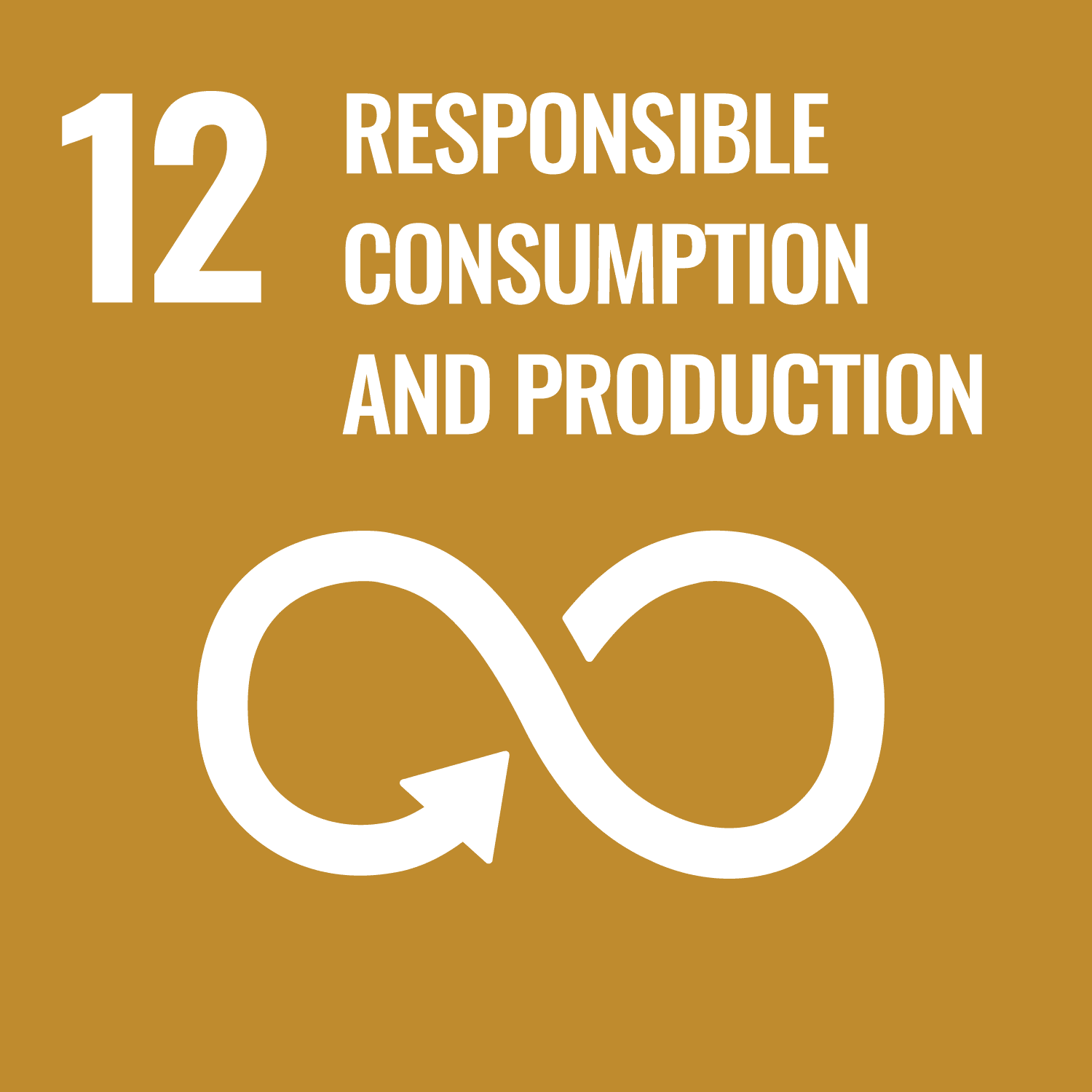Basic sustainability report

Message from Management
With this report, we aim to build on the foundation laid in our first report while establishing even stronger frameworks to measure, evaluate, and improve our efforts in the years to come.
Happy reading!

The UN Sustainable Development Goals
At Kruso A/S, we have chosen to focus on UN Sustainable Development Goals (SDGs) 3, 4, 5, 12, and 13.
These five goals reflect the areas where we believe Kruso A/S can make the most meaningful contribution and drive lasting, sustainable impact.
- SDG 3 focuses on good health and well-being, which is crucial for our employees, customers, and the general welfare of society.
- SDG 4 addresses quality education, which is vital for developing skills and opportunities for a better future.
- SDG 5 emphasizes gender equality and the empowerment of women and girls, a fundamental value for creating a fair and inclusive world.
- SDG 12 highlights responsible consumption and production, which is critical to minimizing our environmental footprint and promoting sustainable business practices.
- SDG 13 centers on climate action, which is essential for combating climate change and preserving our planet for future generations.

Health and Wellbeing
We must ensure a healthy life for everyone and promote well-being for all age groups

Quality education
We must ensure everyone has equal access to quality education and promote everyone's opportunities for lifelong learning

Gender Equality
We must achieve gender equality and strengthen the rights and opportunities of women and girls

Responsible Consumption and Production
We need to ensure sustainable consumption and production

Climate initiative
We must act quickly to combat climate change and its consequences
UN Sustainable Development Goal 3- - Good Health and Well-Being
-
Health Insurance
Our health insurance through Tryg ensures that our employees have access to necessary medical care and treatment when they need it. This type of insurance not only provides financial coverage for medical expenses but also supports our employees' overall well-being and quality of life.Through health insurance, we offer our employees quick access to specialists and treatments. We view our health insurance as a way to care for our employees' welfare and well-being. With the health insurance, our employees can feel secure knowing that they and their families are covered in case of medical emergencies or unforeseen health issues.We also believe that health insurance can be a decisive competitive advantage in recruitment processes, helping us attract and retain talented employees in a competitive job market. Therefore, opting for health insurance is a natural choice that benefits both the business and its employees. -
Pension
The average age at Kruso A/S is 37.8 years, meaning many employees are in life stages where major events—such as having children, getting married, or buying a home—frequently occur. These changes often lead to shifting financial responsibilities and priorities, requiring a timely review of pension and insurance coverage.To support our employees through these transitions, Kruso A/S offers annual pension reviews in collaboration with Velliv. In 2023, we hosted 54 individual pension meetings, a notably high number due to our transition from Danica to Velliv as our pension provider. In 2024, this number normalized to 25 meetings, representing nearly half of our staff—an engagement level we consider highly satisfactory.According to Velliv, 90% of Kruso A/S employees have pension and insurance coverage that aligns with recommended levels.Our employees also show a strong commitment to sustainability through their pension investments: in 2024, 64% of all invested pension funds were allocated to sustainable assets.Kruso A/S provides an employer pension contribution of 8% of each employee’s pensionable salary, complemented by a mandatory employee contribution of at least 4%. In 2024, the total average pension contribution reached 14.2%, of which 2.2% came from voluntary employee contributions—demonstrating a proactive attitude toward long-term financial wellbeing. -
Whistleblower
At Kruso A/S, we are committed to transparency and maintaining a responsible working environment. As part of this commitment, we have implemented a whistleblower program that enables both internal and external individuals to report concerns in a safe and structured manner.Two dedicated whistleblower officers—one female and one male employee, both outside of the management team—have been appointed to handle all incoming reports.If anyone becomes aware of conduct that may compromise Kruso A/S’s ethical standards or integrity, we strongly encourage them to use the whistleblower channel. Reports can be submitted anonymously.All cases are automatically directed to the appointed officers, who handle them with strict confidentiality and in full compliance with relevant laws and guidelines.
Work-Life-Balance
At Kruso A/S, we prioritize work-life balance. We offer our employees flexibility, including the option to work from home and flexible working hours. We encourage our employees to work from the office at least three days a week, preferably between 9:00 AM and 3:00 PM. While remote work has its advantages, we value the physical presence of our employees at one of our offices, as it fosters a strong team spirit and promotes knowledge sharing—both of which are essential to our workplace.
- We find that remote work allows employees to create a more flexible work life, achieving a better balance between their professional and personal lives. This ultimately results in happier and more satisfied employees.
- Certain tasks are often better accomplished at home, where distractions and interruptions commonly found in an office setting can be minimized. This can boost productivity by enabling employees to work in an environment that suits their work style and preferences, giving them greater autonomy over their work life.
- Recently, we partnered with Flexbuy to make it possible for employees to purchase ergonomic chairs, desks, and other relevant items for their home office. These purchases are made through a gross salary deduction, ensuring that employees can enjoy optimal working conditions even when working from home.
- We view the option to work remotely as an important factor in ensuring a socially sustainable workplace where employees of all ages and life circumstances can thrive over the long term. Fundamentally, we see great value in retaining our employees for many years, and we know that many of them appreciate the flexibility of remote work. This makes it a long-term investment that benefits both our employees and Kruso A/S.
- Lastly, remote work contributes to reducing Kruso A/S’s overall carbon footprint by decreasing the need for daily commuting. As highlighted in the section on Sustainable Development Goal 13, a significant portion of our CO2 emissions stems from transportation.


Sick leave
7.5h-Days/FTE
2024
Employee turnover
%
2024
Sick leave and employee turnover
The average number of sick leave days per employee at Kruso A/S decreased from 13 days in 2023 to 12.1 days in 2024. According to our own calculations, sick leave cost Kruso A/S approximately DKK 2 million in 2024, corresponding to DKK 39,811 per employee.
Sport ’n’ Charity
Through our support of Sport ’n’ Charity, we are proud to contribute to creating a positive impact on society—promoting health, community, and togetherness through sport.



UN Sustainable Development Goal 4
– Quality Education
– Quality Education
We see it as a sound and strategic investment to dedicate both time and financial resources to upskilling. Our people are our most valuable asset, and their development is directly linked to our ability to deliver impactful digital solutions. By offering learning opportunities, we also attract talent seeking an environment that supports both personal and professional growth.
- Training hours per employee in 2024: 64,39 hours
- Training hours per employee in 2023: 103.24 hours
- Training hours per employee in 2022: 72.15 hours
Students, interns, and student assistants
As a company, we benefit greatly from the fresh perspectives that interns, students, and trainees bring to the table. We also consider ourselves dependent on the continued education of new professionals within the IT industry. At the same time, we firmly believe that software development is very much a craft — and that internships are a valuable way to give aspiring developers hands-on experience in building complex digital solutions.
To ensure a positive internship experience, we make sure that each intern is assigned a senior mentor and, whenever possible, is placed on a real project from day one. This ensures that the intern is given meaningful tasks right from the start and always has a clear point of contact if they need help or guidance. Ideally, the intern and their mentor are seated close to each other physically, as we have found that this setup best supports knowledge sharing and learning.

-
Student Affiliation
In 2024, we had one student affiliated with our Copenhagen office. The student was enrolled in the Data and Communication – IT Technician program with a specialization in Programming.
He completed a two-year educational program at Kruso in January 2024.
Interns
During 2024, we hosted nine interns who were students within the fields of marketing, UX design, and software development.
Each internship lasted between three and five months. -
Student Assistants
In 2024, we had four student assistants. Three of them were employed as office managers, and one as an ESG consultant.
Flex Job
In 2024, we employed one person in a flex job position within backend development. The role is for 7 hours per week.
Despite the limited number of hours, we have successfully structured the position in a way that creates value both for the employee and for Kruso A/S. -
Master’s Degree
In 2023, one of our employees commenced a Master’s degree in IT Management at the IT University of Copenhagen.
The two-year program focuses on technological and organizational leadership, as well as transformation in a dynamic business environment.
The aim is to strengthen both the employee’s professional capabilities as a digital strategist and their leadership perspective in their current role, while also supporting future development opportunities—both within and beyond Kruso A/S.
UN Sustainable Development Goal 5
– Gender Equality
– Gender Equality
Gender equality opens the door to a broader range of perspectives and ideas. This leads to more creative solutions and better decision-making, as diverse viewpoints challenge assumptions and drive innovation.
By fostering an environment where all genders feel welcome and respected, Kruso A/S attracts and retains top talent across the gender spectrum. This strengthens our talent pool and enables us to fully leverage the potential of every employee.
Understanding the end-user is critical in web design, and women often represent half of the consumer base. By ensuring that our teams include both men and women, we can create digital experiences that appeal to a wider audience. Female consumers bring unique perspectives that must be reflected in our design process—helping us deliver more relevant and engaging websites.
In summary, we believe that prioritizing gender equality results in a more inclusive, innovative, and successful organization—one that is better equipped to meet today’s challenges and seize tomorrow’s opportunities.

Female full-time employees.
%
2024
Gender pay gap
Men : Women
2024
Gender Equality
This highlights the ongoing gender imbalance in the IT and tech sectors (dst.dk).
Gender Equality and Recruitment at Kruso A/S
Gender Pay Ratio at Kruso A/S vs. Market Benchmarks
Furthermore, within the financial sector, an unexplained gender pay ratio of 0.93 has been reported—after accounting for factors such as education, job role, and seniority (Finansforbundet).
At Kruso A/S, we are aware of the existing gender pay ratio and view it as a structural challenge that requires ongoing attention. We are committed to continuously monitoring our pay practices and workforce composition, with the aim of reducing this gap over time as part of our broader commitment to diversity and gender equality.
Supporting Education Through UNICEF

UN Sustainable Development Goal 12
– Responsible Consumption and Production
– Responsible Consumption and Production
The Climate Impact of the Internet
The internet plays an important role in the green transition by enabling remote meetings, reducing the need for travel, and supporting the digitalization of books, media, music, and other content—resulting in significantly lower CO₂ emissions compared to their physical counterparts. However, the internet also has a climate footprint, primarily due to the energy required for data storage on servers.
Design as a Tool for Reducing Carbon Emissions—and Cutting Costs
Web design can be an effective lever for lowering the internet’s climate impact. File sizes, color schemes, programming languages, and server infrastructure all consume electricity and contribute to CO₂ emissions. By making climate-conscious design choices, it is possible to significantly reduce a website’s environmental footprint—while also generating cost savings.

Wanicare Foundation
The project earned Kruso the Umbraco Award for “Best Green Solution,” and our client was extremely pleased with the outcome.
https://kruso.dk/en/insights/win-at-the-umbraco-awards-2023
The result was that the new wanicare.com emits 67% less CO₂ per page load compared to the old website.
On the right side, you can read more about the specific steps we took to make Wanicare Foundation’s new website one of the most sustainable in the country.
Green energy: While many hosting providers use 100% green energy, we went a step further. Wanicare.com is hosted by Leafcloud, which repurposes server heat to warm nearby buildings.
Closer to users: Just like physical transport, the distance data travels impacts emissions. Leafcloud’s servers are strategically located near Wanicare’s main audience, minimizing data travel.
Modern image formats: We use AVIF and WEBP instead of PNG and JPEG. These formats are much smaller, reducing data transfer without sacrificing quality.
Smart compression: Our WEBP images are compressed at 95% quality — nearly indistinguishable to users but up to 6× smaller.
No video: Videos generate large amounts of data. We chose to use only images, cutting down load times and emissions while enhancing UX.
Minimal JavaScript: Many websites overuse JavaScript for tasks HTML or CSS can handle. We relied on modern HTML/CSS to reduce code and improve efficiency.
Color choices: On OLED screens, darker colors use less energy. That’s why our mobile site uses dark green backgrounds instead of white.
Online meetings only: All development meetings were held online — a far greener choice than traveling by car or train.
Digital climate sustainability
Climate Optimization Audits:
- Assessment of current CO₂ emissions from digital platforms
- Clear sustainability goals and tailored action plans
- Ongoing reporting to ensure CSRD compliance
- Green hosting and CDN usage
- Energy-efficient coding and reduced data usage
- Strategic content management
- UX and design choices aimed at reducing digital emissions
- Improved performance and faster load times
- Enhanced Core Web Vitals metrics
- Reduced website-related CO₂ emissions
- Measurable improvements in digital performance
- Better alignment with current environmental regulations
- Real-world examples of low-impact websites
- Practical takeaways for sustainable web editing
- Kruso’s design and development principles for climate-conscious digital solutions
Leasing of IT equipment
At Kruso A/S, we lease our IT equipment through a selection of partners that prioritize environmentally responsible solutions, including Atea, Admire, and Flexbuy. All three suppliers are chosen due to their strong focus on sustainable IT lifecycle management, circular economy principles, and reduction of environmental impact.
- Flexbuy https://www.flexbuy.dk/da/recycle/
- Admire https://www.admire.dk/miljobevidst-it/
- ATEA https://www.atea.dk/return/?utm_source

Cloud – A Sustainable IT Solution
At Kruso A/S, we have transitioned to storing the majority of our data externally through cloud-based solutions. By leveraging cloud services, we optimize our resource consumption, as server capacity can be scaled up or down depending on our actual needs.
Since our demand for server capacity fluctuates, it is a significant advantage to use a solution that prevents unnecessary energy consumption due to excess or idle capacity.
Cloud solutions also reduce the need to upgrade and maintain local IT infrastructure, thereby minimizing electronic waste.
Overall, cloud computing contributes to a more sustainable IT infrastructure by optimizing resource usage, lowering energy consumption, and promoting shared and efficient use of IT resources.
Currently, we use the following external cloud providers: Azure, Curanet, Umbraco Cloud, and Netlify. These providers have been selected, among other criteria, for their commitment to energy-efficient and environmentally responsible technologies.
- Azure and Umbraco Cloud have set goals to power their data centers entirely with renewable energy by 2025.
- Curanet already runs its servers on 100% renewable energy.
- Netlify operates using Amazon Web Services (AWS), which currently runs on 90% renewable energy, as well as Google Cloud, which uses 100% renewable energy and is actively working toward becoming fully carbon-neutral.

Energy for People — Not Just Machines
Frokostkonsulenten ApS
In both our Aarhus and Copenhagen offices, we partner with Frokostkonsulenten ApS for our daily lunch programs. All their suppliers are required to have, at minimum, a sustainability strategy, and Frokostkonsulenten also provides sustainability consulting to help them improve further.
Currently, our Aarhus office receives lunch from Madkammeret, which holds the Bronze Organic Label from Frokostkonsulenten—indicating that 30–60% of the food is organic. In Copenhagen, we work with Madkonceptet ApS, which is in the process of obtaining the same Bronze Organic Label, expected by early 2025. Madkonceptet also offers a fixed weekly vegetarian day.
Responsible Coffee Consumption at Kruso A/S
Kruso A/S sources most of our coffee from ØNSK ApS and Nice Coffee—two suppliers deeply committed to social and environmental sustainability.
According to ØNSK’s latest 2024 Impact Report, they’ve enhanced efforts in carbon tracking and launched a carbon insetting project with Nicaraguan farmers. They also introduced a women-only medium roast (“Señoras de Sisle”) and established a circular-economy partnership to upcycle coffee grounds into cups and cosmetic products. This builds on their direct-trade model: in 2022, farmers received an average of 45.1 % above market price, with continued transparent pricing. They actively promote agroforestry and regenerative farming, significantly reducing CO₂ and protecting biodiversity.
Nice Coffee continues to offer organic, fair trade–certified, and climate‑compensated coffee with full traceability. While no new figures are publicly available, they maintain strong partnerships with small cooperatives in developing countries, use recyclable packaging, and sustain their commitment to transparency and responsibility throughout the supply chain.


UN Sustainable Development Goal 13
– Climate Action
– Climate Action
Kruso A/S has developed a carbon accounting report that provides an overview of our greenhouse gas emissions, including emissions related to electricity, district heating, waste, and business travel (Scope 2 and Scope 3).
The report shows that our primary sources of emissions are commuting and business travel, while electricity, heating, and waste contribute to a lesser extent. We have no activities under Scope 1, as our emissions are all indirect and therefore calculated under Scope 2. Business-related travel and commuting fall under Scope 3.
All calculations follow the international GHG Protocol standard.
We encourage all employees to use public transportation whenever possible for business travel. Through our corporate agreement with DSB (the Danish national railway operator), DSB has calculated our CO₂ footprint and the emissions we have avoided by choosing train travel over car travel.
According to DSB’s calculations, in 2023 we saved 2,704 kg of CO₂ by traveling by train instead of by car. Our total emissions from train travel amounted to 963 kg of CO₂ in the same year.
Danmarks Naturfredningsforening

Appendiks
Comments on the report
The report is not verified by an independent third party. Although we have made efforts to ensure that the content of the report is accurate, there is no guarantee regarding its accuracy and/or completeness, and we therefore disclaim any liability for any damage or loss that may arise from actions taken based on the report.

